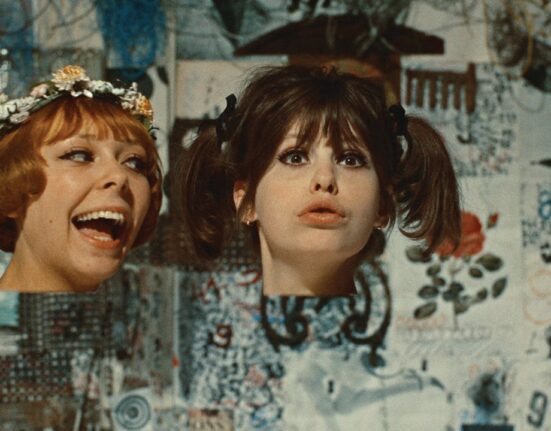
Adding to its constantly growing art ecosystem, a new contemporary art foundation—AMA VENEZIA—opened in Venice last weekend. Behind it is Laurent Asscher, a Belgian businessman and passionate collector who, in little more than a decade, accumulated one of the most prestigious collections of contemporary American and European art, earning him a spot on ArtNews’ Top 200 Collectors List. With curated showings from his extensive trove of contemporary masterpieces, the foundation aims to create a space where these exceptional works of art can be shared.
“Why Venice? Because it’s clear that this is becoming a real capital of art, like a big hub for contemporary art,” Asscher told Observer when we spoke a few days after an intense and highly attended weekend of opening festivities. When Asscher started to think of creating a foundation to share the vast array of artworks he had collected with a broader public, he quickly realized that would never have happened in Montecarlo, where he lives, given the extremely challenging real estate market. With some ties to Italy and a house in Venice, he was particularly inspired by the recent openings of art spaces, museums and foundations, which now complement the city’s existing museums and rich heritage and extend its role as art capital beyond a seasonal hub with the occasion of the Venice Biennale.
SEE ALSO: At Marian Goodman Gallery, Tavares Strachan Investigates the Stories that Shape Our Existence
AMA VENEZIA, which was named for Asscher’s children (Andrea, Matteo and Alessandro) and the Italian word for love, joins a strong group of new or relatively recent institutions, such as Berggruen Arts & Culture, Fondazione Prada, François Pinault’s Palazzo Grassi and Punta della Dogana, along with numerous temporary exhibitions organized every year for the by nomadic foundations and institutions with venues elsewhere, like Fondazione In Between Art and Film, Victor Pinchuk Foundation or Fondazione Sandretto, among numerous others.
“They’re very inspiring. They’re all different, but you have to be with them,” says Asscher, noting that Venice is one of the few cities where you can experience art singlemindedly. “In New York, for example, you’re often pulled into business meetings, leaving little time. But in Venice, you can come purely for art and dedicate an entire day to it.” As we speak, we’re interrupted by his ringing phone. “It was Larry Gagosian; I’ll call him back,” he says, subtly reminding us of his caliber as a collector.


Asscher’s fortune comes from his involvement in the family-owned jewelry and diamond business Asscher Diamonds, which has been a significant player in the diamond industry for generations. The company gained particular prominence in the early 20th century for developing the “Asscher Cut,” a signature diamond style that became incredibly popular and remains in demand today. Although Asscher hails from a family of collectors, he didn’t start acquiring art for himself until 2012. But when he did, he jumped in with both feet, playing the game seriously from the start.
His first purchase was a Jean-Michel Basquiat, which was at auction with a “decent price” at Christie’s. ” I had some liquidity, and I always dreamed of a Basquiat,” Asscher says, “This was on a Wednesday, but then on Thursday, I saw there was a better one at Philips. I did not sleep for twenty-four hours.” Luckily, Asscher was able to swap and get the Jean-Michel Basquiat he wanted: Irony of a Negro Policeman, 1981, sold at Phillips for $12.6 million, as shared by Simon De Pury, who hammered it on the rostrum.
The second purchase, Asscher tells Observer, was another high-end piece: a Cy Twombly. “I was crazily obsessed with the late Cy Twombly, and I bought a Bacchus inspired by his period in Rome.” Only later in his collecting journey did Asscher start to to buy more middle-career and emerging names, which allowed his collection to achieve a good mix today, despite mostly concentrating on the U.S. and Europe. “I started to collect while I was working with the U.S. and frequently visiting the country. My orientation and taste as a collector, even if I’m based in Europe, is more like an American collector, as I was looking at what museums and galleries in the U.S. were showing.”
Asscher’s collection includes key works by American and European artists dating from the 1960s to the present—from heavy-hitter masters such as Cy Twombly, Brice Marden and David Hammons to more contemporary stars Elizabeth Peyton, Salman Toor, Laura Owens, Jenny Saville and Florian Krewer. Notably, when collecting an artist, Asscher will often acquire more than one work as a means of exploring their output in more depth. “If I can, I always try to buy one type of work of every artist’s period,” he says, “For example, for Wade Guyton, I might have eight or of Jordan Wolfson’s robotic works, four.” Asscher also tells Observer that he never relied on art advisors for research, but he does when it comes to sourcing. For discovery, he generally turns to dealers, artists and other collectors.


Although Asscher’s collection is vast and varied in both narratives and mediums, the collector admits to having a preference for abstraction, which makes up a significant portion of his holdings. Abstraction is also central to the inaugural show at AMA VENEZIA, which explores the different ways artists approach abstraction today, specifically by playing on the timely binary between hand and machine, analog and digital—duals that reflect our own fluctuating existence as technology becomes more deeply integrated into how we express, communicate, perceive, think and live.
That’s how Avery Singer’s computer-based works, which integrate 3D modeling software like Google SketchUp with traditional painting, can coexist in the same exhibition as Wade Guyton’s code-inspired abstract ink patterns, which are displayed alongside Salman Toor’s dreamy, sentimental canvases, where the nuances of oil painting capture a complex, layered sense of reality that straddles the psychological and physical worlds. Mohammed Sami’s haunting scenes and Elizabeth Peyton’s intimate portraits share space with Jacqueline Humphries’s quasi-cinematic yet cryptic imagery inspired by codes and screens. And here are Refik Anadol’s ever-evolving magmatic chromatic abstractions generated through A.I. prompts: linguistic and tactile inputs turn into numeric data from which, once elaborated by an external intelligence, results in the abstract spectacle of colors and movements—a full integration of technology in the creative process that encourages us to embrace the possibilities that emerge when human creativity and artificial intelligence converge. A standout piece in the show is the seductively dystopic robotic presence of Jordan Wolfson’s dancing woman in a mini-dress. Staring at the viewer as it tries to bewitch them with animatronic rhythmic movement, the work completes this uncanny yet revelatory blending between human, technology and post-human.
While Asscher had been thinking of opening his foundation more casually for the past three years, occasionally looking for the right place in Venice, the opportunity came this summer when he saw a listing for a perfect space online. From there, the process went smoothly, although, as he tells Observer, he had to wait two months to sign and finalize the deal because the seller was on holiday—though that’s not surprising in Italy. A large exposed-brick space near the Scuola Grande della Misericordia in Cannaregio, once one of the few soap factories in Venice and long disused, now houses a rotating selection of works from his collection. Restored by renowned architectural studio TA Torsello Architettura, the building has 10,000 square feet of exhibition space.
Group exhibitions from the collection will kick off the program, but solo exhibitions and future collaborations with other institutions are also on the table. “But there are no rules. We’re open to anything,” Asscher says, making it clear that this is, first and foremost, a personal project driven by a profound passion for both art and a genuine desire to contribute to Venice’s scene.








